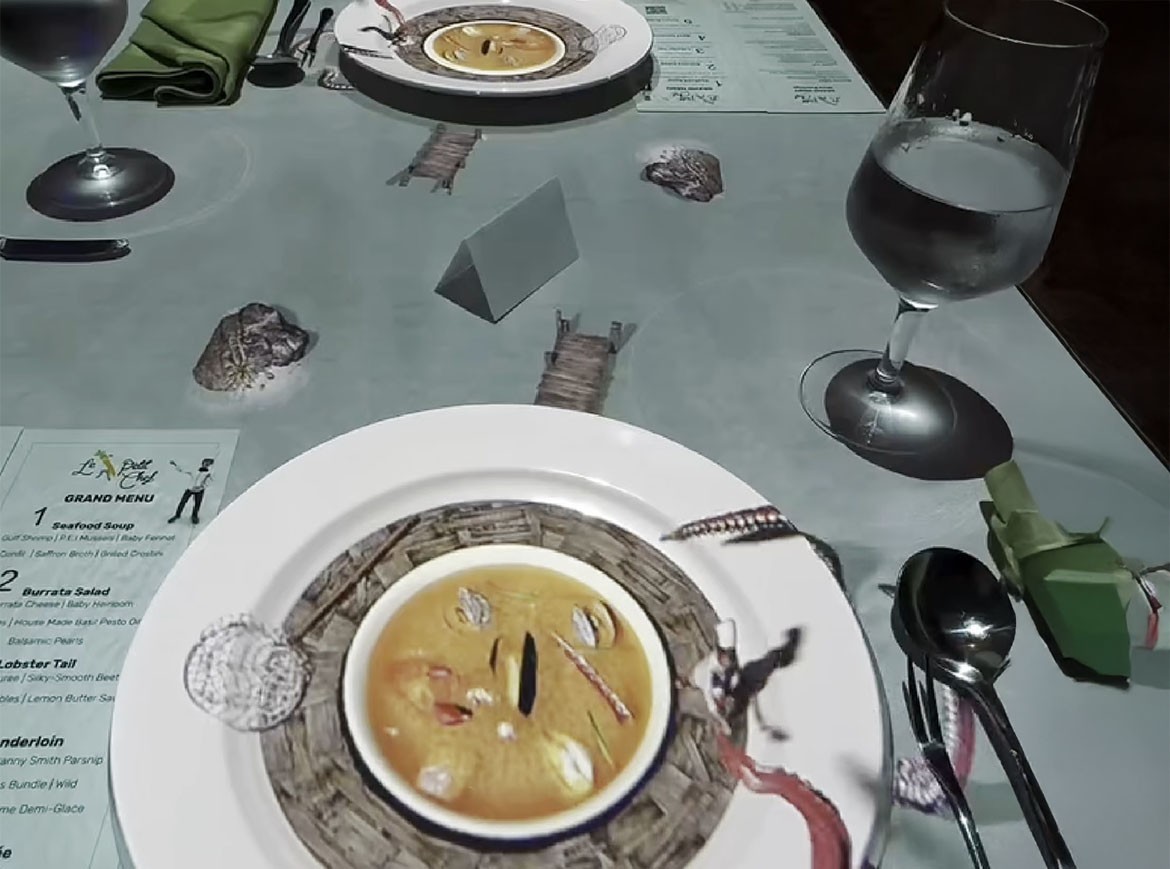Le Petit Chef Meets AI – Immersive Dining as the Future of Storytelling
Photo: © Skullmapping & TableMation Studios
Your Plate. The Stage. How AI, Projection and Interaction Are Reinventing Dinner
What started as a playful dinner has evolved into a fascinating prototype for adaptive experience architecture: “Le Petit Chef” demonstrates how AI, sensor fusion and spatial computing create a new form of storytelling – right on the table. Projections merge with the tableware. Characters respond to guests in real time. And a dinner that is not just served, but staged.
The key: The technology is not only entertaining, but also adaptive. It observes, analyzes, and adjusts. A glimpse into how future hospitality experiences might work: emotional, dynamic and intelligent.
More and more experiential dining concepts are leveraging this immersive technology to emotionally engage guests and embed them actively in a story. What used to be a linear menu becomes a dynamic narrative space. Guests become participants – every bite a storytelling trigger.
This also means: The future of gastronomy is not just in the kitchen, but in the fusion of design, sensing, and AI. Dinner becomes an interface that reacts, narrates, and connects.
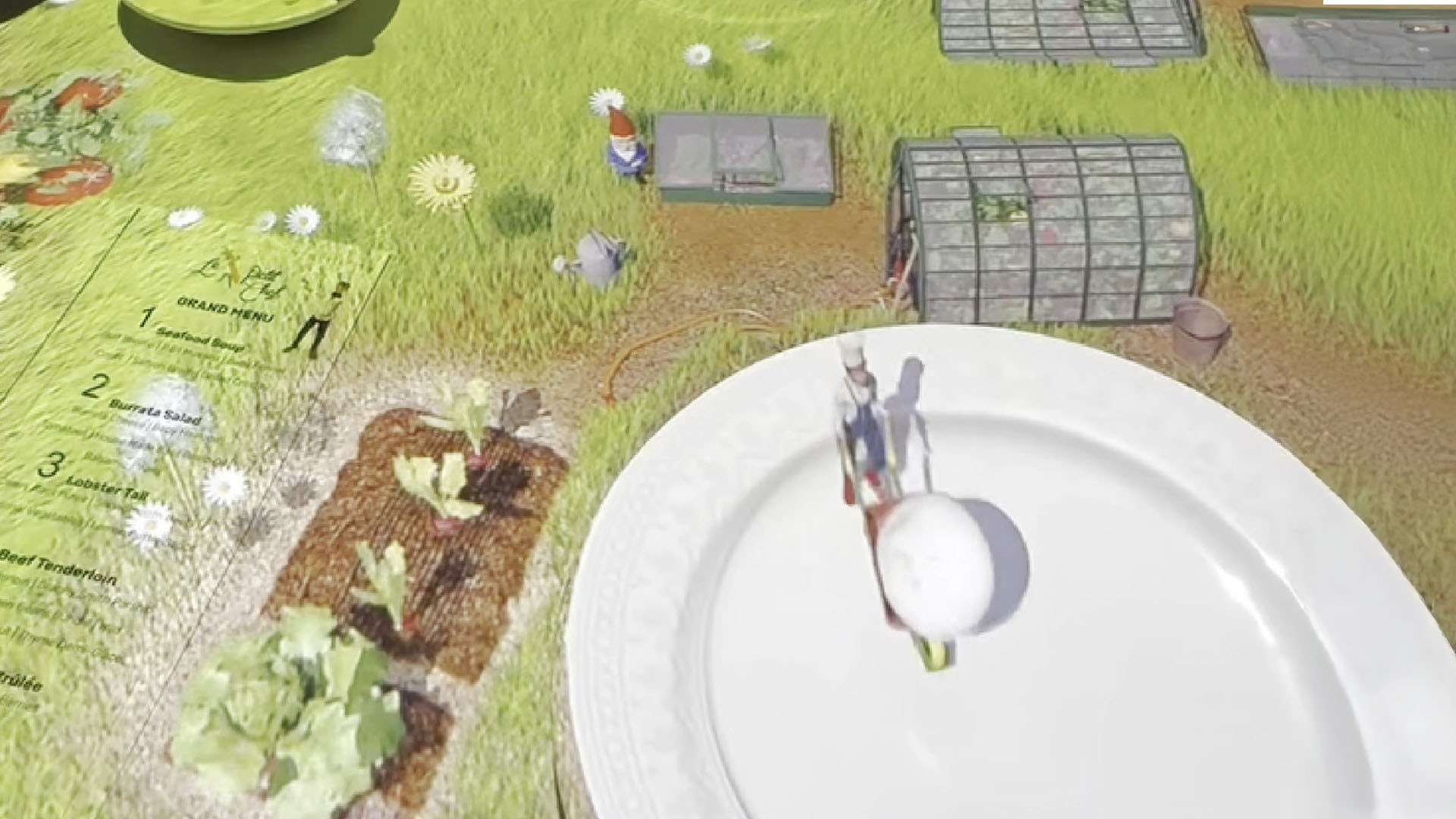
AI-powered dinner with Le Petit Chef
Photo: © Skullmapping & TableMation Studios
From Projection to Interaction: Experiential Dining in Transition
The unique aspect is not just the animation – but the interaction. “Le Petit Chef” becomes a narrator who reacts to cultural context, mood, and language. Combining real-time projection and AI, an experience emerges that adapts to each guest individually.
At the core is real-time responsiveness: The digital chef detects whether a guest is smiling, asking questions, leaning back, or actively engaging. This creates dynamic storylines that are never the same. Every evening is unique, every table a new chapter.
Semantic interfaces further enhance the experience: The AI interprets not only gestures and facial expressions but also content – like table conversations. The system can then play culturally relevant content or structure the menu into a matching dramatic arc.
- Adaptive Storylines: Depending on culture, age, or language choice
- Smart Tables: Responsive to gestures, expressions, and gaze
- Emotional Mapping: Stories that adapt to emotions
The table becomes a canvas, the meal a narrated experience – and every interaction part of the story.
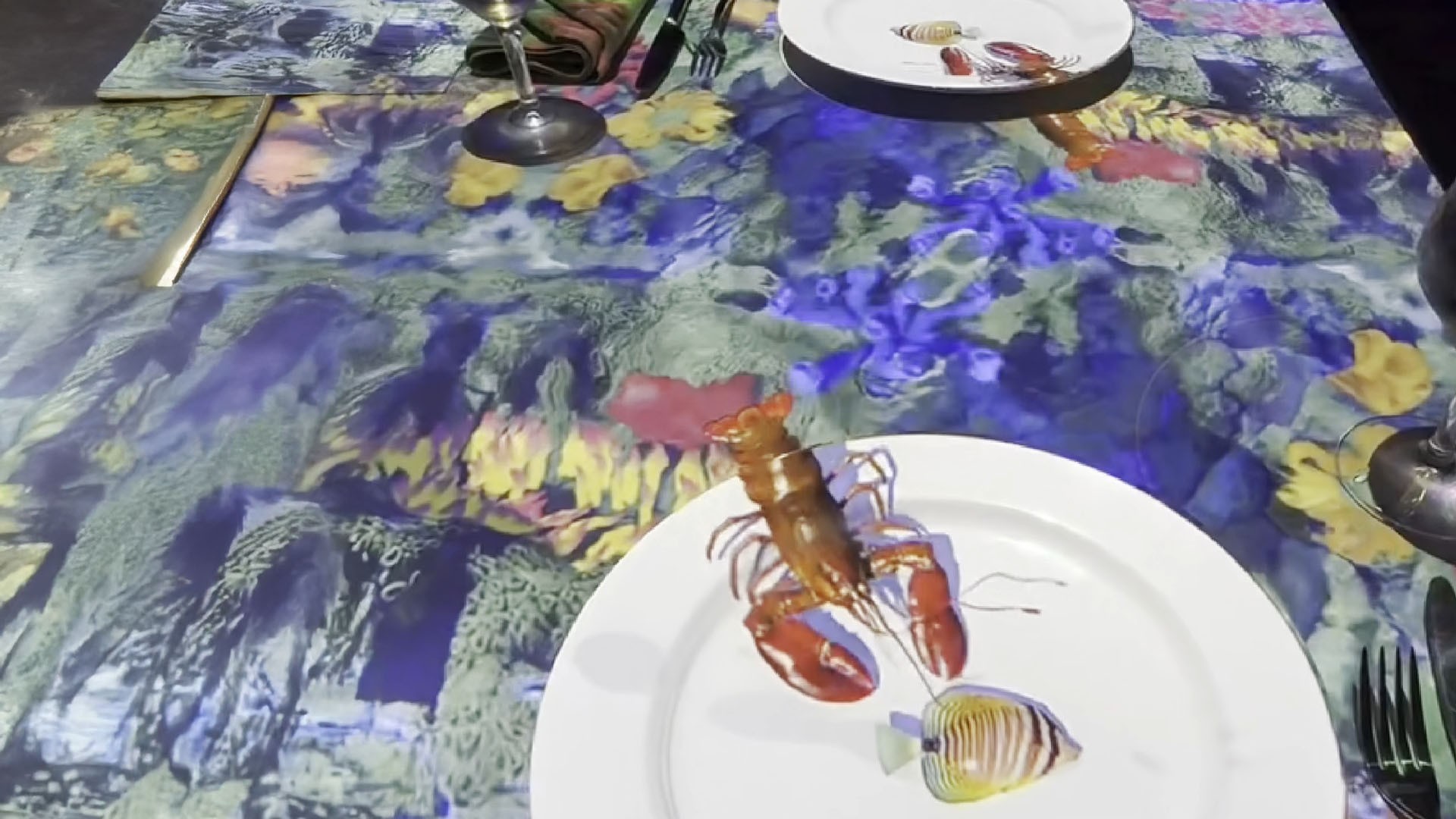
Example of an interactive garden scenario on the table
Photo: © Skullmapping & TableMation Studios
Technological Foundations: AI, Sensing and Real-Time Projection
Behind the experience lies a complex interplay of technologies. Real-time 3D engines, AI-driven interaction, and spatial sensors turn a dinner into an intelligent interface.
Especially exciting is the integration of spatial computing: The environment is detected, mapped, and incorporated into the narrative. The projections align precisely with the tableware, respond to movement, and create an illusory world that blends reality and virtuality.
AI modules control not only the character “Le Petit Chef” but also the dramatic elements: lighting, sound, visual effects. The table becomes a synchronized experience zone – comparable to a theater directed by AI.
- 3D Engines: Real-time rendering in Unity or Unreal Engine
- AI Modules: Emotion recognition, user behavior, interaction logic
- Spatial Computing: Synchronization of space, tableware, and guests
These technologies could also be used in the future to create immersive worlds in retail, education, or healthcare.
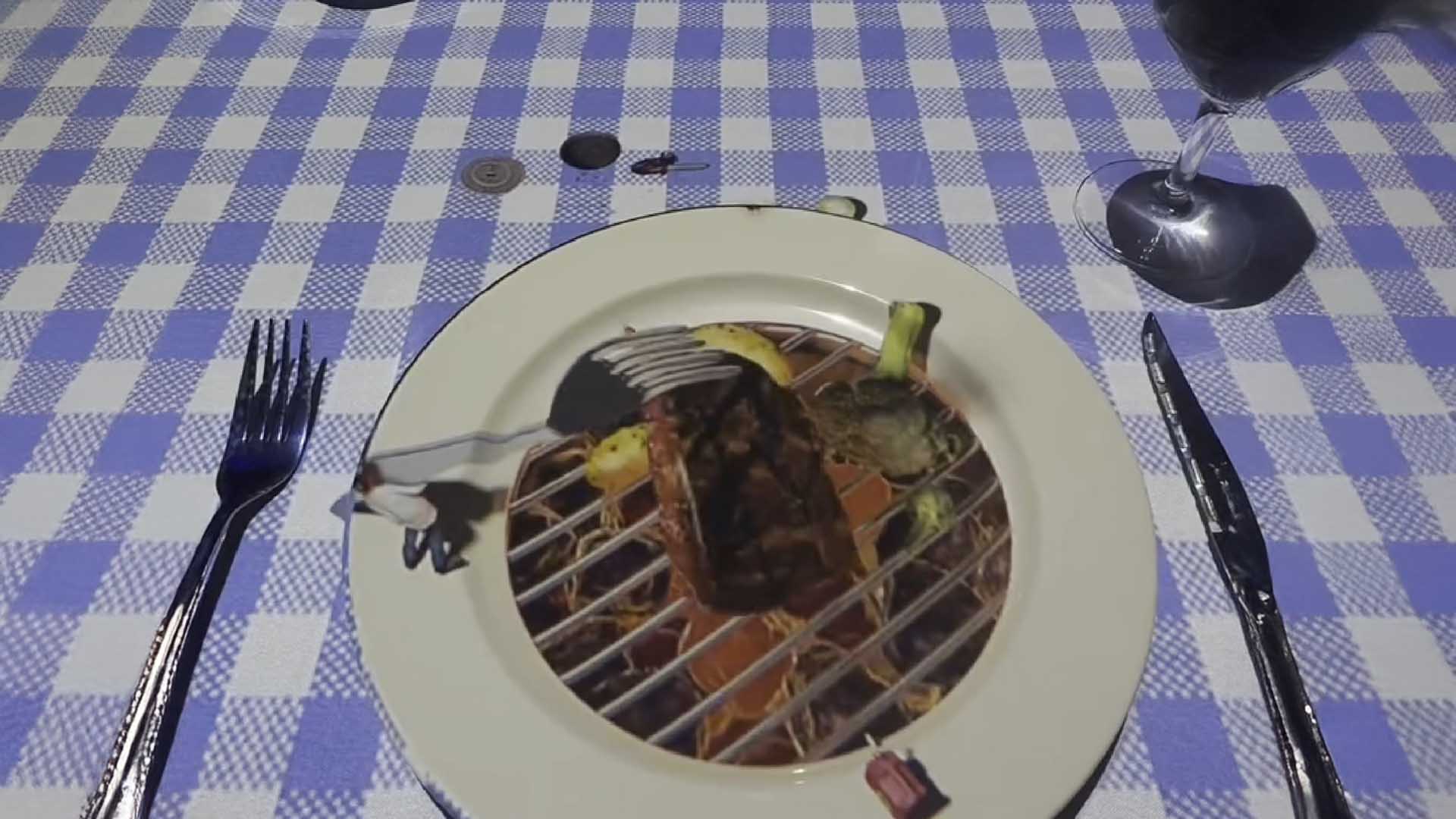
Le Petit Chef preparing an animated dish
Photo: © Skullmapping & TableMation Studios
Infographic: From Static Menu to Dynamic Experience
The following infographic illustrates how traditional gastronomy can be transformed by immersive technologies:
- Stage 1: Printed menus & linear procedures
- Stage 2: Visual entertainment & projection mapping
- Stage 3: Adaptive AI stories with individual delivery
With each stage of evolution, memory retention, engagement, and brand experience increase.
Remarkably, studies show that guests remember AI-powered, interactive content four times more often than traditional menus or decorations. Emotional bonding is massively enhanced through multisensory experiences.
In the future, restaurants could dynamically tailor their experience portfolios based on data analytics – depending on target group, time of day, weather, or guest profile. The kitchen provides the taste. The system delivers the experience.
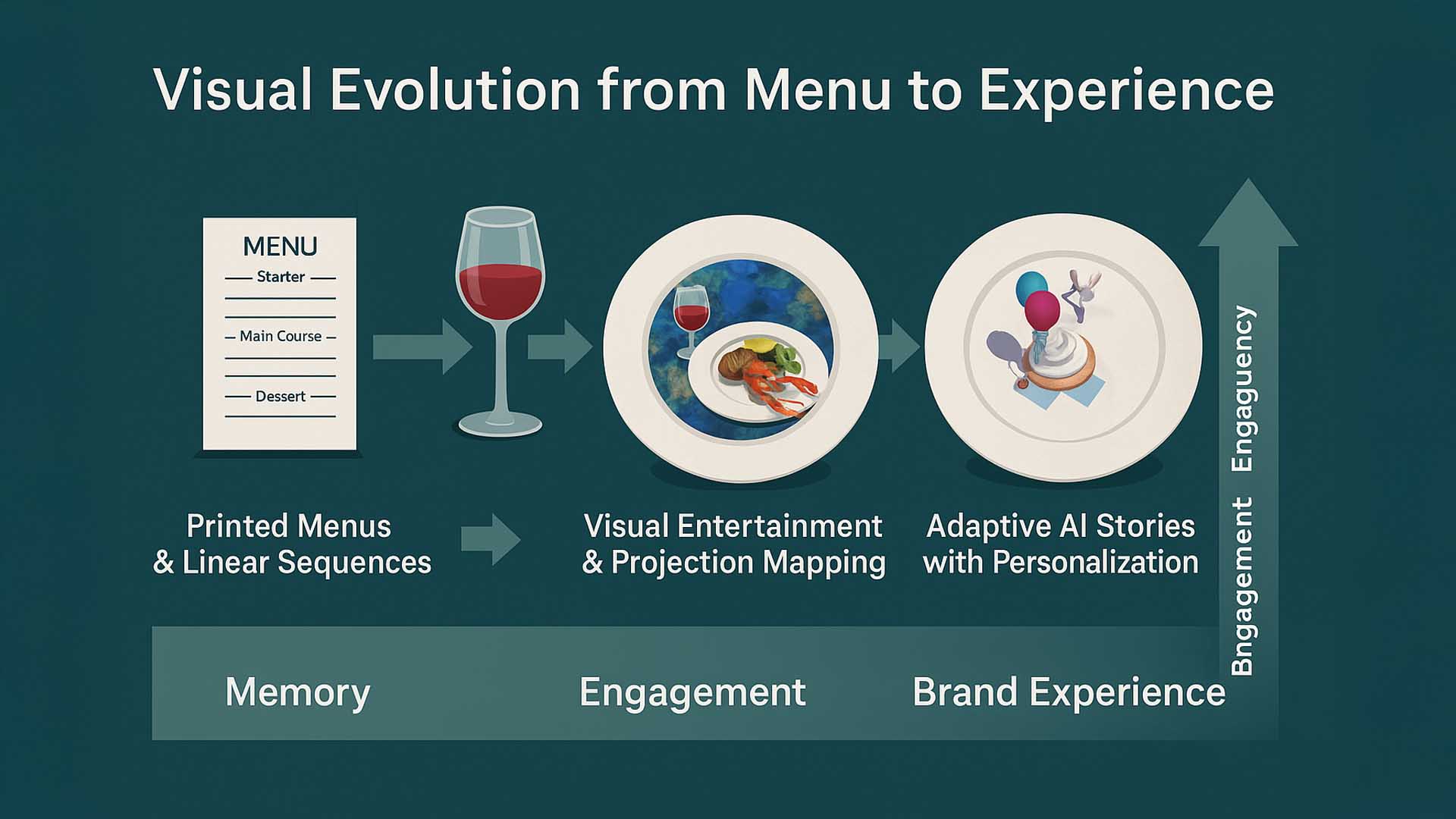
Visual evolution from menu to experience
Infographic: Visoric GmbH News Room / Ulrich Buckenlei
Video: Dinner as a Stage – Live, Reactive and Immersive
This scene illustrates how seamlessly the boundaries between reality and projection blur. The table comes alive, the menu speaks, the experience stays with you.
The video shows how precisely animation, lighting and soundscape are synchronized. Guests laugh, marvel, take photos – and become part of the story. This type of entertainment opens new doors for brand staging and customer experience.
Especially interesting is the scalable architecture: Similar systems could be used in business lounges, at events or even in healthcare – e.g. to reduce anxiety or activate cognitive processes.
Le Petit Chef live at Dinner Time Stories Houston
Video: © Skullmapping & TableMation Studios
Contact Our Expert Team
The Visoric Team supports companies in implementing immersive experiences using spatial computing, AI and XR technologies – from creative concept to production-ready solution.
- Experience Design: Storytelling across all senses
- AI + Projection: Reactive interfaces in gastronomy, retail and events
- Consulting & Development: From vision to prototype to scalable solution
Contact us now – and let’s create memorable experiences together.
Kontaktpersonen:
Ulrich Buckenlei (Kreativdirektor)
Mobil: +49 152 53532871
E-Mail: ulrich.buckenlei@visoric.com
Nataliya Daniltseva (Projektleiterin)
Mobil: + 49 176 72805705
E-Mail: nataliya.daniltseva@visoric.com
Adresse:
VISORIC GmbH
Bayerstraße 13
D-80335 München


